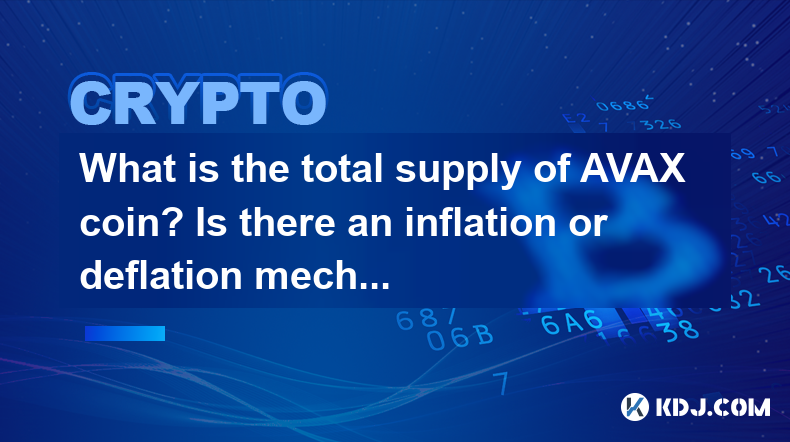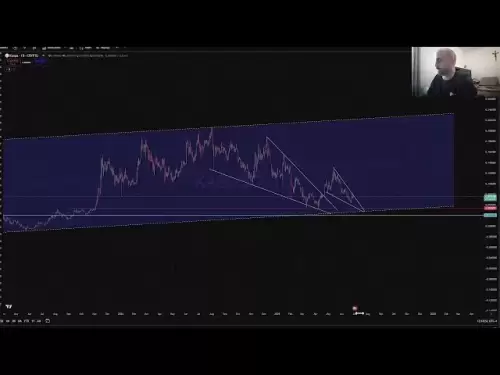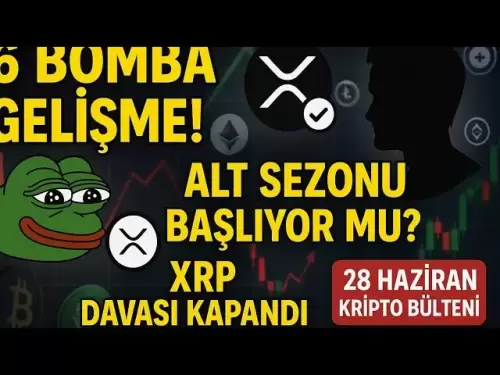-
 Bitcoin
Bitcoin $107,341.7259
0.15% -
 Ethereum
Ethereum $2,438.6204
0.70% -
 Tether USDt
Tether USDt $1.0003
-0.02% -
 XRP
XRP $2.1866
1.94% -
 BNB
BNB $649.0952
0.36% -
 Solana
Solana $150.9602
5.63% -
 USDC
USDC $0.9999
0.00% -
 TRON
TRON $0.2742
0.40% -
 Dogecoin
Dogecoin $0.1645
1.93% -
 Cardano
Cardano $0.5669
1.18% -
 Hyperliquid
Hyperliquid $37.8286
4.19% -
 Bitcoin Cash
Bitcoin Cash $491.4669
-2.74% -
 Sui
Sui $2.8150
3.06% -
 Chainlink
Chainlink $13.4184
2.91% -
 UNUS SED LEO
UNUS SED LEO $9.0809
0.27% -
 Avalanche
Avalanche $18.0295
2.60% -
 Stellar
Stellar $0.2396
1.19% -
 Toncoin
Toncoin $2.8587
0.13% -
 Shiba Inu
Shiba Inu $0.0...01160
2.59% -
 Litecoin
Litecoin $86.4192
1.45% -
 Hedera
Hedera $0.1486
1.19% -
 Monero
Monero $308.4324
0.87% -
 Polkadot
Polkadot $3.4202
1.43% -
 Bitget Token
Bitget Token $4.6436
-0.34% -
 Dai
Dai $0.9998
-0.02% -
 Ethena USDe
Ethena USDe $1.0002
0.00% -
 Uniswap
Uniswap $7.1527
3.29% -
 Pi
Pi $0.5357
-8.45% -
 Pepe
Pepe $0.0...09588
4.61% -
 Aave
Aave $259.9759
0.81%
What is the total supply of AVAX coin? Is there an inflation or deflation mechanism?
AVAX has a fixed 720,000,000 token supply, but uses a dynamic inflation mechanism to reward validators, adjusting based on network activity and staking; deflation isn't a primary goal, but is theoretically possible.
Mar 11, 2025 at 06:16 pm

Key Points:
- AVAX's total supply is capped at 720,000,000 tokens.
- Avalanche employs a complex inflation mechanism, balancing network security and rewarding validators.
- Inflation rate is not fixed and adjusts based on network activity and validator participation.
- The initial inflation rate was high, gradually decreasing over time.
- Staking plays a crucial role in the inflation mechanism, rewarding participants.
- Deflationary pressure is not a primary design goal of AVAX, but could occur under specific conditions.
What is the total supply of AVAX coin? Is there an inflation or deflation mechanism?
The total supply of AVAX, the native cryptocurrency of the Avalanche blockchain, is fixed at 720,000,000 tokens. This hard cap ensures a limited supply, a characteristic often sought after in cryptocurrencies to potentially mitigate inflation in the long run. However, understanding the intricacies of AVAX's inflation mechanism is crucial to comprehend its overall tokenomics.
Unlike some cryptocurrencies that aim for deflation, Avalanche's design incorporates an inflation mechanism. This isn't inherently negative; instead, it's designed to incentivize network participation and security. The inflation rate isn't static; it dynamically adjusts depending on various factors.
The primary factor influencing AVAX inflation is the level of staking activity on the network. Validators who stake their AVAX to secure the blockchain are rewarded with newly minted AVAX tokens. This incentivizes participation and maintains the network's decentralization and security. The more AVAX staked, the higher the overall network security, but also the higher the inflation rate.
The initial inflation rate upon Avalanche's launch was relatively high. This was strategically implemented to rapidly incentivize validator participation during the network's early stages. Over time, the inflation rate is designed to gradually decrease. This decreasing rate aims to balance the need for validator rewards with the long-term stability of the AVAX token's value.
The precise inflation rate at any given time is not easily calculable through a simple formula. Instead, it's a complex function influenced by numerous parameters including the number of staked AVAX, the number of active validators, and the overall network activity. These factors continuously interact to determine the rate of new AVAX emission.
AVAX inflation is not a simple, predictable process. The Avalanche protocol uses a sophisticated system to manage token issuance, aiming for a balance between rewarding validators and maintaining token value stability. This system involves multiple reward mechanisms and adjusts dynamically based on network conditions.
While deflation isn't a primary objective of the Avalanche network design, it's theoretically possible under certain circumstances. For example, if a significant portion of AVAX were to be burned through mechanisms such as fees or specific network upgrades, this could outweigh the inflationary pressure and lead to a decrease in the circulating supply.
The dynamic nature of the AVAX inflation mechanism makes precise predictions challenging. It's designed to adapt to the evolving needs of the Avalanche network. This adaptability is crucial for a platform aiming for long-term sustainability and resilience.
Understanding the intricacies of AVAX inflation requires a deep dive into Avalanche's complex consensus mechanism and its reward distribution system. The system is built to be adaptable, reacting to changing network conditions and incentivizing participation in a robust and secure network.
The specific details of the inflation rate and its adjustments are publicly available through Avalanche's blockchain explorer and various analytical tools. Researchers and users can access real-time data to track the current inflation rate and its fluctuations.
The design philosophy behind AVAX's inflation mechanism prioritizes the long-term health and security of the Avalanche ecosystem. The system aims to balance the need for incentives with the stability of the AVAX token's value. This balance is achieved through a dynamic system that adjusts to changing conditions.
The long-term implications of AVAX's inflation mechanism remain to be seen. However, the network's design prioritizes a stable and sustainable ecosystem. The dynamic nature of the inflation rate allows the system to adapt to future challenges and ensure the long-term health of the Avalanche blockchain.
Frequently Asked Questions:
Q: Is AVAX inflationary forever? A: No, the inflation rate is designed to decrease over time. While not deflationary by design, the rate will eventually reach a point of minimal new token issuance.
Q: How can I track the current AVAX inflation rate? A: You can find this information through Avalanche's blockchain explorer and various cryptocurrency data aggregators.
Q: What are the main factors affecting AVAX inflation? A: The primary factors are the amount of AVAX staked, the number of active validators, and overall network activity.
Q: Could AVAX become deflationary? A: While not the primary design goal, deflation is theoretically possible if burning mechanisms significantly outweigh the inflationary pressure from staking rewards.
Disclaimer:info@kdj.com
The information provided is not trading advice. kdj.com does not assume any responsibility for any investments made based on the information provided in this article. Cryptocurrencies are highly volatile and it is highly recommended that you invest with caution after thorough research!
If you believe that the content used on this website infringes your copyright, please contact us immediately (info@kdj.com) and we will delete it promptly.
- Ruvi AI: The Audited Token Primed to Lead the Bull Run, Outshining Competitors
- 2025-06-29 06:30:13
- Ruvi AI: The Smart Shiba Inu? Token Rally Potential Examined
- 2025-06-29 06:30:13
- Bitcoin, AI Tokens, and Ruvi AI: What's the Deal?
- 2025-06-29 06:50:12
- Cryptos with Real-World Utility and Growth Potential: Qubetics and Beyond
- 2025-06-29 06:35:13
- Bitcoin Breakout Imminent: Institutional Demand Fuels the Fire
- 2025-06-29 07:30:13
- Ruvi AI, Dogecoin, and ROI: Decoding the Crypto Hype
- 2025-06-29 07:12:05
Related knowledge

How to customize USDT TRC20 mining fees? Flexible adjustment tutorial
Jun 13,2025 at 01:42am
Understanding USDT TRC20 Mining FeesMining fees on the TRON (TRC20) network are essential for processing transactions. Unlike Bitcoin or Ethereum, where miners directly validate transactions, TRON uses a delegated proof-of-stake (DPoS) mechanism. However, users still need to pay bandwidth and energy fees, which are collectively referred to as 'mining fe...

USDT TRC20 transaction is stuck? Solution summary
Jun 14,2025 at 11:15pm
Understanding USDT TRC20 TransactionsWhen users mention that a USDT TRC20 transaction is stuck, they typically refer to a situation where the transfer of Tether (USDT) on the TRON blockchain has not been confirmed for an extended period. This issue may arise due to various reasons such as network congestion, insufficient transaction fees, or wallet-rela...

How to cancel USDT TRC20 unconfirmed transactions? Operation guide
Jun 13,2025 at 11:01pm
Understanding USDT TRC20 Unconfirmed TransactionsWhen dealing with USDT TRC20 transactions, it’s crucial to understand what an unconfirmed transaction means. An unconfirmed transaction is one that has been broadcasted to the blockchain network but hasn’t yet been included in a block. This typically occurs due to low transaction fees or network congestio...

How to check USDT TRC20 balance? Introduction to multiple query methods
Jun 21,2025 at 02:42am
Understanding USDT TRC20 and Its ImportanceUSDT (Tether) is one of the most widely used stablecoins in the cryptocurrency market. It exists on multiple blockchain networks, including TRC20, which operates on the Tron (TRX) network. Checking your USDT TRC20 balance accurately is crucial for users who hold or transact with this asset. Whether you're sendi...

What to do if USDT TRC20 transfers are congested? Speed up trading skills
Jun 13,2025 at 09:56am
Understanding USDT TRC20 Transfer CongestionWhen transferring USDT TRC20, users may occasionally experience delays or congestion. This typically occurs due to network overload on the TRON blockchain, which hosts the TRC20 version of Tether. Unlike the ERC20 variant (which runs on Ethereum), TRC20 transactions are generally faster and cheaper, but during...

The relationship between USDT TRC20 and TRON chain: technical background analysis
Jun 12,2025 at 01:28pm
What is USDT TRC20?USDT TRC20 refers to the Tether (USDT) token issued on the TRON blockchain using the TRC-20 standard. Unlike the more commonly known ERC-20 version of USDT (which runs on Ethereum), the TRC-20 variant leverages the TRON network's infrastructure for faster and cheaper transactions. The emergence of this version came as part of Tether’s...

How to customize USDT TRC20 mining fees? Flexible adjustment tutorial
Jun 13,2025 at 01:42am
Understanding USDT TRC20 Mining FeesMining fees on the TRON (TRC20) network are essential for processing transactions. Unlike Bitcoin or Ethereum, where miners directly validate transactions, TRON uses a delegated proof-of-stake (DPoS) mechanism. However, users still need to pay bandwidth and energy fees, which are collectively referred to as 'mining fe...

USDT TRC20 transaction is stuck? Solution summary
Jun 14,2025 at 11:15pm
Understanding USDT TRC20 TransactionsWhen users mention that a USDT TRC20 transaction is stuck, they typically refer to a situation where the transfer of Tether (USDT) on the TRON blockchain has not been confirmed for an extended period. This issue may arise due to various reasons such as network congestion, insufficient transaction fees, or wallet-rela...

How to cancel USDT TRC20 unconfirmed transactions? Operation guide
Jun 13,2025 at 11:01pm
Understanding USDT TRC20 Unconfirmed TransactionsWhen dealing with USDT TRC20 transactions, it’s crucial to understand what an unconfirmed transaction means. An unconfirmed transaction is one that has been broadcasted to the blockchain network but hasn’t yet been included in a block. This typically occurs due to low transaction fees or network congestio...

How to check USDT TRC20 balance? Introduction to multiple query methods
Jun 21,2025 at 02:42am
Understanding USDT TRC20 and Its ImportanceUSDT (Tether) is one of the most widely used stablecoins in the cryptocurrency market. It exists on multiple blockchain networks, including TRC20, which operates on the Tron (TRX) network. Checking your USDT TRC20 balance accurately is crucial for users who hold or transact with this asset. Whether you're sendi...

What to do if USDT TRC20 transfers are congested? Speed up trading skills
Jun 13,2025 at 09:56am
Understanding USDT TRC20 Transfer CongestionWhen transferring USDT TRC20, users may occasionally experience delays or congestion. This typically occurs due to network overload on the TRON blockchain, which hosts the TRC20 version of Tether. Unlike the ERC20 variant (which runs on Ethereum), TRC20 transactions are generally faster and cheaper, but during...

The relationship between USDT TRC20 and TRON chain: technical background analysis
Jun 12,2025 at 01:28pm
What is USDT TRC20?USDT TRC20 refers to the Tether (USDT) token issued on the TRON blockchain using the TRC-20 standard. Unlike the more commonly known ERC-20 version of USDT (which runs on Ethereum), the TRC-20 variant leverages the TRON network's infrastructure for faster and cheaper transactions. The emergence of this version came as part of Tether’s...
See all articles

























































































